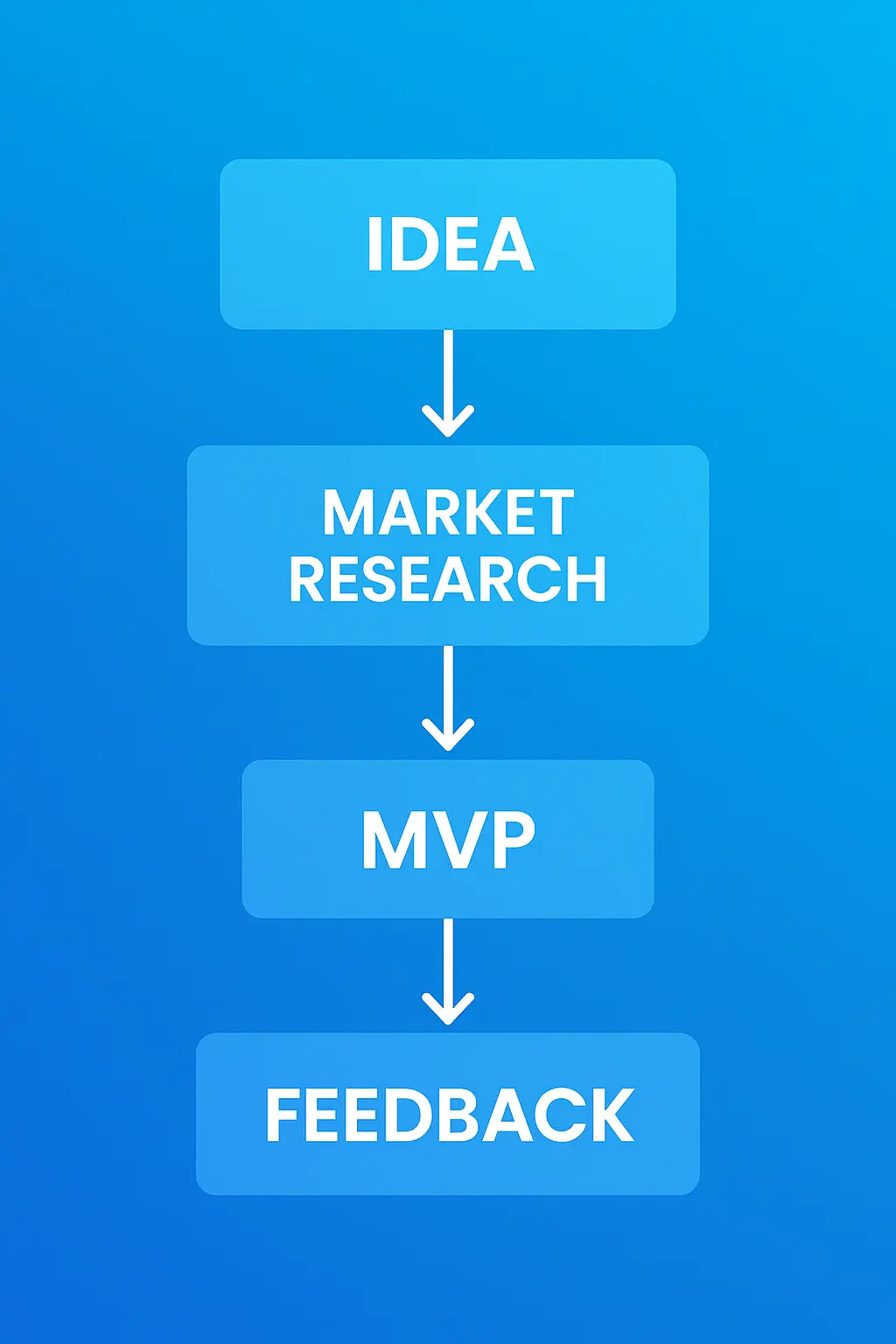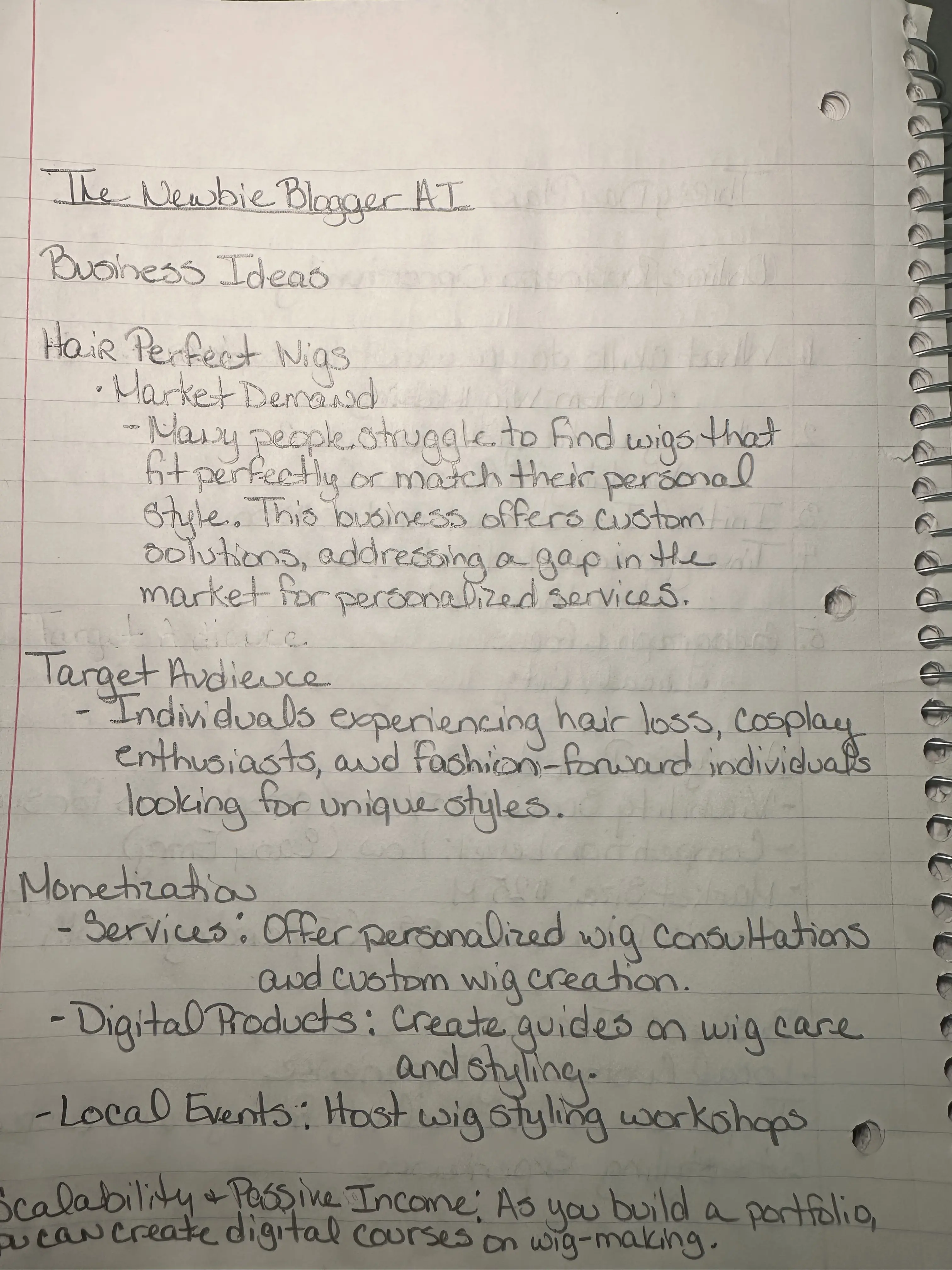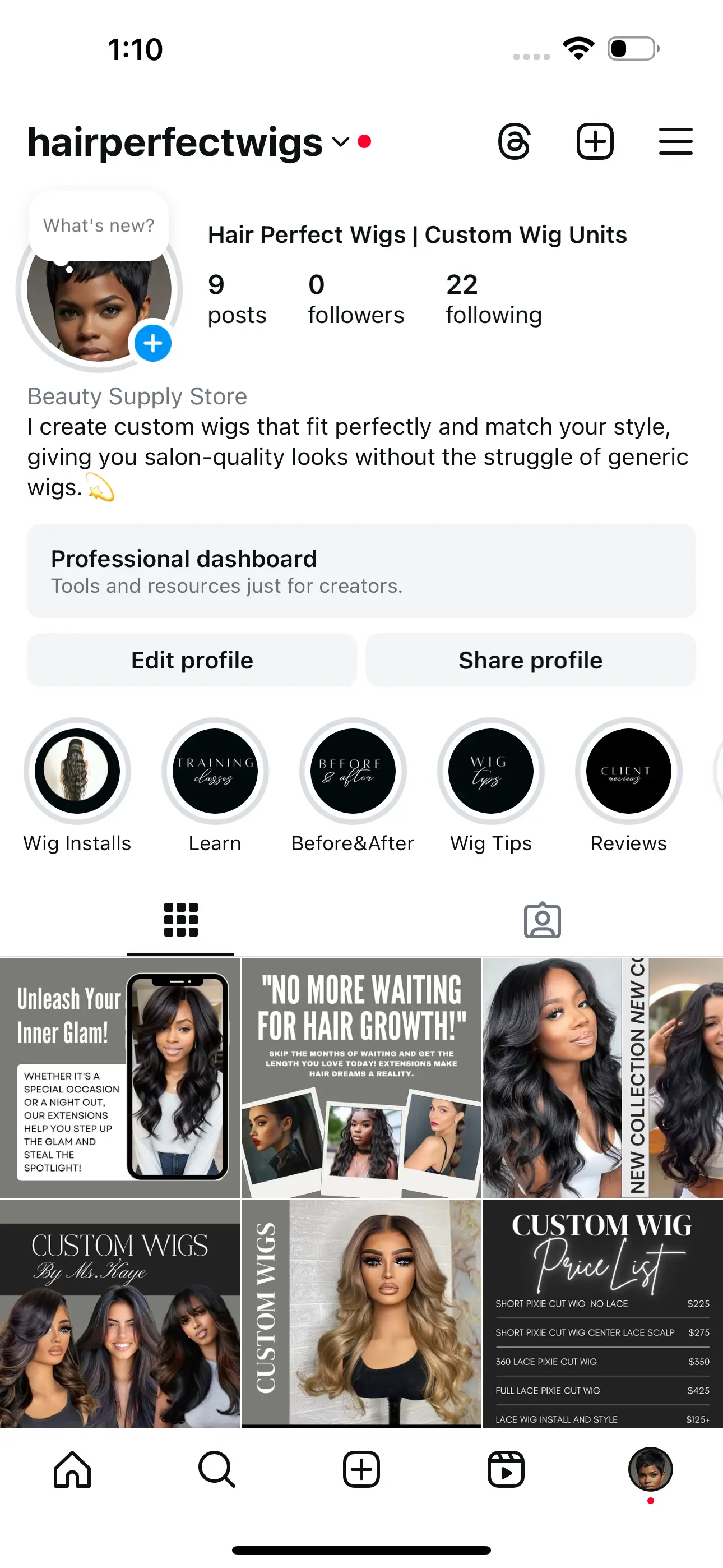How to Start an Online Business: 6-Step Beginner’s Checklist to Build and Scale

Welcome: Your First Steps to Starting an Online Business
So, you’re ready to start an online business… but you don’t know where to begin. You want people to actually find you online, and you want your business to look legit. I get it. I’ve been there.
Starting an online business doesn’t have to feel overwhelming. Think of it like building with LEGO blocks—you snap one piece on at a time until it’s complete. Whether you’re exploring new online business ideas, dreaming of opening an ecommerce store, or simply testing a side hustle from home, this roadmap will give you clarity, direction, and momentum.
When I first started, I had nothing but a dollar and a dream. I knew I had good ideas—ideas that could change my life financially—but my brain was scrambled. I didn’t have a blueprint. I didn’t have clarity. What I did have was stacks of random notes I’d collected over the years, and none of it fit together.
Meanwhile, I watched other people make money online. They were sharing surface-level tips I knew I could top—but I was stuck. Stuck in analysis paralysis. Stuck at the starting line, never moving forward.
Here’s the good news: you don’t have to stay stuck like I did. You don’t need to know everything. You don’t need to drown yourself in information overload. You just need one thing: a simple, step-by-step roadmap.
And that’s exactly what this guide gives you.
By the end of this checklist, you won’t just know your first moves—you’ll see how simple it really is to launch.
Table of Contents
Step 1: Idea Validation
- Define Your Business Idea
- Research Your Market
- Test Your Idea
Step 2: Business Planning
- Develop a Business Plan
- Choose a Business Model
Step 3: Branding and Online Presence
- Create a Brand Identity
- Build a Website
- Set Up Social Media Profiles
Step 4: Legal and Financial Setup
- Register Your Business
- Set Up Business Finances
Step 5: Marketing and Sales
- Develop a Marketing Strategy
- Launch Your Product/Service
Step 6: Growth and Scaling
- Analyze and Optimize
- Plan for Growth
Step 1: Idea Validation (Starting an Online Business)
All right? Before we worry about the website or the online store, we make sure the online business idea is real, clear, and needed. Tool → Action → Reason → Result. Let’s go.

Define Your Business Idea (one sentence)
What this means: Say what you sell, who it’s for, and the result — in one clean line.
So what you’re going to do is…
-
Write one sentence using this template:
“I help [customer base] [achieve result] with [product/service] so they can [benefit] without [pain].”-
Example (ecommerce business): “I sell salon-quality custom wigs for working professionals so they can look polished without spending hours at the salon.”
-
-
Pick a business name you can grow with and quickly check the domain name (yourbrand.com).
-
Jot a quick brand note: 3 words for your brand vibe (e.g., “clean, bold, friendly”).
Why it matters: Clarity makes your marketing, search engine optimization, and online sales easier.
Shortcut (The Newbie Blogger AI):
-
Business Idea Generator → get beginner-friendly business ideas fast.
-
Micro Niche → niche down so customers “get it” in 3 seconds.
-
Audience Targeting & Business Positioning → instant positioning line you can paste on your website + social.
Result: A clear, testable business idea and a name + domain shortlist.
Research Your Market (quick + practical)
What this means: See what’s already working so you don’t reinvent the wheel.
So what you’re going to do is…
-
Google your idea. Check Amazon, Etsy, and top online businesses in your niche.
-
Scan customer reviews: list 3 things people love and 3 complaints. That’s your opportunity.
-
Note starter pricing, simple fulfillment or supply chain details (ship yourself, print-on-demand, or digital delivery).
-
Capture 5 phrases your customers use (these become SEO keywords for your blog/content).
Why it matters: You’re building for real people, not guessing. This also feeds your search engine optimization and content plan.
Shortcut (Thirty Day Plan):
-
Niche Discovery Wizard → viability score, competitors, growth potential.
-
Audience Problem Finder → exact pains/goals to write copy that converts.
-
Customer Persona with Avatar → who you’re talking to (makes social media faster to plan).
Bonus listen-in spots: Look at “starting an online business reddit” threads to hear raw questions.
Result: Clear target audience, early pricing, and a short list of keywords you’ll use to start selling.
Test Your Idea (MVP → feedback → green light)
What this means: You sell (or pre-sell) a tiny version first. No big budget. No perfect brand.
So what you’re going to do is…
-
Pick your MVP format:
-
Product / ecommerce: list one product in a simple store (Shopify/Etsy) or a checkout page.
-
Digital product: make a 5–10 page guide, template, or mini-course.
-
Service / small business: one-page website with “Book Now” and 1–2 packages.
-
-
Post it: one social media post + a quick email/DM to 10 ideal customers.
-
Ask for feedback: “What would make this a no-brainer?” Collect 5 honest replies.
-
Track tiny wins: clicks, sign-ups, pre-orders, or DMs. That’s market proof.
Why it matters: You avoid months of work on something people don’t want. You get data fast.
Shortcuts (stack these smart):
-
The Newbie Blogger AI
-
Digital Products Writer → draft your mini offer in 15–30 min.
-
Lead Magnet Writer → create a freebie to build your list before the launch.
-
High Converting Blog Post + Click-Worthy Blog Titles → seed SEO for long-term online sales.
-
-
Thirty Day Plan
-
Profitability Calculator → price right, see break-even.
-
30-Day Action Plan → daily tasks to go from MVP to revenue.
-
Launch to Bank Tracker → track sales and keep momentum.
-
Result: Real-world signal (interest, sign-ups, customer messages, test sales). If it’s crickets, adjust the offer, price, or positioning and retest quickly.
Why trust this? I’ve built and tested multiple online businesses and turned scattered ideas into clear offers using the exact steps above. Screenshots show real tools I use daily (The Newbie Blogger AI + Thirty Day Plan). I teach what I’ve actually done — not theory.
Step 2: Business Planning
All right, so now that your business idea is validated, it’s time to build a foundation that can actually grow. This is where most people fall off — they jump straight to selling products without a plan. Don’t do that. A good business plan is like GPS for your journey into the online business world. It keeps you focused, saves you money, and shows you the best way to scale.

Develop a Business Plan
Your business plan doesn’t need to be 50 pages long. Forget the corporate-style binder nobody reads. You just need a clear roadmap that answers a few big questions:
-
What’s your goal? (Is this a side hustle, a full-time online business, or an ecommerce business you want to scale big?)
-
Who’s your customer base? (Busy moms? Students? Small business owners? Professionals?)
-
What problem are you solving? (This ties back to Step 1: Idea Validation.)
-
How will you make money? (Digital products, selling on Amazon, services, online store, subscriptions?)
Your plan should also include a simple financial strategy:
-
Your starting budget (yes, you can start an online business from home for free or close to it).
-
Your pricing model (how much will your products/services cost?).
-
Your break-even point (when do sales cover expenses?).
💡 Shortcut with Thirty Day Plan: Use the Profitability Calculator to see your earnings potential. It factors in costs, revenue, and even your supply chain setup. No spreadsheets needed.
Choose a Business Model
Once you know what you’re selling, you need to decide how you’ll make sales. This is your business model.
Here are some common online business ideas you can start today:
-
Ecommerce business: Selling products through your own online store or marketplaces like Amazon.
-
Digital products: eBooks, courses, templates, or webinars (low cost, high profit).
-
Service-based business: Coaching, consulting, or freelancing (great for beginners).
-
Affiliate marketing: Promoting other products for commission.
-
Subscription model: Customers pay monthly for access (great for recurring income).
Ask yourself: Which model fits my lifestyle, skills, and timeline? Do I want to build a store and manage fulfillment, or do I want a lean digital product business I can run from anywhere?
💡 Shortcut with The Newbie Blogger AI: Use the Digital Product Ideas Generator if you’re not sure what to sell. Or the Business Idea Generator to test multiple models side by side. It’ll give you beginner-friendly, scalable ideas that don’t require big budgets.
Takeaway: Without a business plan, your idea stays a dream. With one, you’ve got a clear path from idea → online business → sales.
Step 3: Branding and Online Presence
Now that your business idea is validated and your plan is in place, it’s time to make your business online look and feel legit. This is where you create your brand identity, set up your website, and open the doors to social media so your customers can actually find you.
Remember: you don’t need a million-dollar logo or a complicated site. You just need to look professional enough to build trust and start selling.

Create a Brand Identity
What this means: Your brand is how people recognize, remember, and trust your business.
So what you’re going to do is…
-
Choose your business name → simple, clear, and available as a domain name.
-
Pick brand colors + fonts → 2–3 colors max, 1–2 fonts. Keep it clean.
-
Design a logo → you can start with Canva or a free template. Upgrade later if needed.
-
Define your brand voice → are you casual and friendly? Bold and expert? Choose 3 words that capture your vibe.
Why it matters: Consistency in your brand builds trust with your customer base and makes your online store or site feel legit.
Shortcut with The Newbie Blogger AI:
-
Use the Audience Targeting & Business Positioning template to get your brand positioning statement (one-liner you’ll use everywhere).
-
Use Product Benefits Generator to write brand messaging that connects emotionally.
Result: A simple brand kit you can use for your website, social media, and product packaging.
Build a Website
What this means: Your website is your home base. Social platforms are rented space. If you want real online sales, you need a domain name and site.
So what you’re going to do is…
-
Pick a domain name (yourbusiness.com). Aim for short, easy to spell, and brandable.
-
Choose hosting or a builder (WordPress, Shopify, Wix, Squarespace).
-
Create these 3 starter pages:
-
Home (clear value statement: who you help + what you sell).
-
About (your story builds authority → EEAT).
-
Contact (easy way for customers to reach you → builds trust).
Add a simple product/services page if you’re ready to start selling.
Don’t forget search engine optimization (SEO) basics:
-
Use your focus keyword (starting an online business) in your homepage title and meta description.
-
Add your main business idea keywords naturally in your copy.
-
Include at least one external link (to a trusted source like Shopify or SBA.gov).
Shortcut with The Newbie Blogger AI:
-
Use the High Converting Blog Post + Click-Worthy Blog Titles prompts to seed your site with SEO content.
-
Use the Competitor Content Gap Analysis to see what blog posts you can write that your competitors missed.
Result: A website that shows up in Google, builds credibility, and gives you a place to direct all your social media traffic.
Set Up Social Media Profiles
What this means: Social is your megaphone. It gets eyeballs on your online business.
So what you’re going to do is…
-
Pick 1–2 platforms where your audience already hangs out. (Example: Instagram + TikTok for style niches, LinkedIn for B2B, YouTube for tutorials).
-
Use the same brand colors, logo, and bio across all accounts → consistent brand identity.
-
Create a short, keyword-rich bio: “I help [audience] [get result] with [your product].”
-
Post at least 3 pieces of content before promoting your page. (Example: an intro post, behind-the-scenes, and your first offer.)
Shortcut with The Newbie Blogger AI:
-
Use the Persuasive Hooks tool to write attention-grabbing captions.
-
Use the Content Format Generator to turn your blog posts into social media posts (carousels, Reels, captions).
-
Use the TikTok Story Script Generator to create faceless, scroll-stopping videos.
Result: A consistent, trustworthy brand presence that makes people feel safe buying from you.
Takeaway: Your brand doesn’t have to be perfect — it just needs to be consistent. With a simple website and active social media presence, you’ll have everything you need to start attracting your customer base and building your first real online sales.
Step 4: Legal and Financial Setup
Here’s where most people freeze — the “official” stuff. But listen: getting your online business legal and financially organized doesn’t have to be scary. Think of it like setting up a safety net. It protects you, makes your business look legit, and helps when you’re ready to grow.
Register Your Business
What this means: You’re making your business official in the eyes of the law and your customers.
So what you’re going to do is…
-
Choose a business structure:
-
Sole Proprietorship → easiest, lowest cost, but you’re personally liable.
-
LLC (Limited Liability Company) → protects your personal assets, popular for small businesses.
-
Corporation → usually for larger online businesses with investors.
Register your business name: Make sure it matches your domain name if possible.
Get licenses or permits:
-
If you’re selling products in an online store, check if your state requires a resale permit.
-
For services or digital products, many times you don’t need much beyond the registration.
Why it matters: Customers trust businesses that are registered and protected. Plus, it helps when you set up payment processors like Stripe, PayPal, or Amazon Seller accounts.
Shortcut with Thirty Day Plan:
-
Use the 30-Day Action Plan → it literally walks you through when to register, what to file, and how not to miss a step.
Result: You’ve got a real, recognized business online — not just a hobby.
Set Up Business Finances
What this means: Your money needs to be cleanly separated from your personal finances.
So what you’re going to do is…
-
Open a business bank account → keeps sales and expenses separate (makes taxes and scaling easier).
-
Get accounting software → QuickBooks, Wave (free), or FreshBooks help track online sales, expenses, and profit.
-
Plan for taxes → set aside a percentage of your sales right away (20–30% is safe for U.S. small businesses).
-
Track customer payments + refunds → this keeps your customer service and customer reviews positive.
Why it matters: Mixing money causes headaches (and IRS problems). Clean records = smoother growth and better decisions.
Shortcuts with Tools:
-
Thirty Day Plan → Profitability Calculator: shows how much you need to charge to cover expenses and profit.
-
The Newbie Blogger AI → Product Benefits Writer: use for financial-friendly messaging that makes your offers sound valuable, not just cheap.
Result: A clean financial system that lets you start selling, pay yourself, and plan for scaling.
Takeaway: Registering your business and setting up finances may not feel “fun,” but it’s your foundation. It builds credibility, keeps you out of trouble, and makes scaling into real revenue possible.
Step 5: Marketing and Sales
Here’s the fun part — getting your online business in front of real people and turning them into paying customers. Most beginners either (1) overcomplicate marketing with too many tactics, or (2) don’t do enough and wonder why they’re not making sales.
The truth? You don’t need every strategy. You just need a clear marketing plan that matches your business idea, your customer base, and your stage of growth.
Develop a Marketing Strategy
What this means: Pick a few channels that actually work for your audience and show up consistently.
So what you’re going to do is…
-
Choose 2–3 main channels:
-
Social media (Instagram, TikTok, YouTube) → great for storytelling and brand awareness.
-
Content marketing (blogging + SEO) → builds authority and drives free traffic long-term.
-
Email marketing → turns traffic into repeat customers and builds loyalty.
-
Paid ads → optional later, once you have proof your offer converts.
Create a content calendar: Plan one week at a time. Mix educational, entertaining, and sales-driven content.
Use customer reviews + testimonials: Social proof builds trust and shortens the buying decision.
Track results: Don’t just post and pray. Check what content is driving clicks, leads, or sales.
Why it matters: Without a strategy, you’re just posting into the void. With a plan, you’ll actually reach the right customers and drive online sales.
Shortcut with The Newbie Blogger AI:
-
High Converting Blog Post → write SEO-driven articles that pull traffic from Google.
-
Topic Cluster → build content silos around your online business ideas.
-
Persuasive Hooks + TikTok Script Generators → instant scroll-stopping content for social.
Shortcut with Thirty Day Plan:
-
Audience Problem Finder → create content that directly solves your audience’s pain points.
-
30-Day Action Plan → daily marketing prompts so you never wonder “what do I post today?”
Result: A clear, repeatable marketing strategy that grows your customer base and gets consistent visibility.
Launch Your Product/Service
What this means: A launch isn’t just hitting “publish” on your online store. It’s about creating excitement, building anticipation, and making it easy for people to buy.
So what you’re going to do is…
-
Set a launch date → gives urgency and focus.
-
Build a simple launch campaign:
-
Tease → Share sneak peeks on social media (“Something exciting is coming!”).
-
Educate → Show why your product/service solves their problem.
-
Launch → Announce your offer with clear CTAs (buy, sign up, order).
-
Follow-up → Share customer reviews, testimonials, and behind-the-scenes.
Collect feedback + refine: Pay attention to questions, hesitations, or objections. This is free market research for round two.
Why it matters: A launch creates momentum. Momentum = sales. Sales = proof you have a real business.
Shortcut with The Newbie Blogger AI:
-
Sales Funnel Strategy → map your lead magnet → nurture content → sales offer.
-
Sales Page Writer → build a simple landing page that sells without needing a designer.
-
Press Release Outreach → pitch your launch to podcasts, influencers, and journalists.
Shortcut with Thirty Day Plan:
-
Launch to Bank Tracker → monitor sales, set milestones, and see your revenue climb in real-time.
Result: You don’t just launch quietly. You launch with confidence, attract your first paying customers, and start building customer reviews for long-term trust.
Takeaway: Marketing and sales aren’t about doing everything. They’re about choosing the right channels, showing up consistently, and launching with intention. Do that, and your online business goes from “idea” to “income.”
Step 6: Growth and Scaling
You’ve launched, made your first sales, and now you’re ready to grow. Here’s where a lot of new entrepreneurs stall — they stop at the first win instead of building momentum. Scaling means taking what’s already working in your online business and making it bigger, smarter, and more profitable without burning out.
Analyze and Optimize
What this means: Use real data (not just feelings) to improve your business.
So what you’re going to do is…
-
Track KPIs (Key Performance Indicators):
-
Website traffic (how many people are finding your online store or website).
-
Conversion rate (how many visitors become customers).
-
Average order value (how much each sale is worth).
-
Customer reviews + feedback (what people love vs. what needs fixing).
Audit your marketing: Which social media posts, blog articles, or emails are bringing in leads? Double down on those.
Tweak your systems: Improve your customer service, streamline your fulfillment, and fix bottlenecks in your supply chain.
Why it matters: Small adjustments compound over time. This is how good business ideas become profitable online businesses.
Shortcut with The Newbie Blogger AI:
-
AI Content Audit & Optimization Assistant → reviews your blog/SEO strategy and tells you what to improve.
-
Competitor Content Gap Analysis → spot what competitors aren’t covering, so you can rank higher in search engine optimization.
Shortcut with Thirty Day Plan:
-
Launch to Bank Tracker → monitor progress toward revenue goals.
-
Profitability Calculator → test new price points or offers.
Result: A sharper, more profitable business that grows on purpose.
Plan for Growth
What this means: Scaling isn’t about doing everything. It’s about expanding strategically.
So what you’re going to do is…
-
Add new offers:
-
If you started with one product, add variations or bundles.
-
If you sell services, add a digital product for passive income.
-
If you’re an ecommerce business, expand into a new product line.
Enter new markets:
-
Sell internationally (consider shipping/fulfillment partners).
-
Target a new audience segment with tailored messaging.
Build partnerships and collaborations:
-
Partner with influencers in your niche.
-
Do collabs with other online businesses (bundle offers, joint webinars, shared launches).
Automate and outsource:
-
Use tools to automate emails, posts, and customer service replies.
-
Hire a VA or freelancer for repetitive tasks so you can focus on growth.
Why it matters: Growth done strategically creates freedom. You’ll build a business that doesn’t just work you harder but actually gives you time, money, and impact.
Shortcut with Tools:
-
The Newbie Blogger AI → Sales Funnel Strategy → map out advanced funnels to scale.
-
Thirty Day Plan → 30-Day Action Plan → shift from “launch” mode to “growth” mode with daily steps.
Result: A business that scales beyond a single product or side hustle — and becomes a full-fledged small business with consistent online sales.
Takeaway: Growth isn’t about chasing every new trend. It’s about analyzing what’s working, optimizing it, and scaling strategically with new offers, markets, and systems. That’s how you move from your first online business idea to a long-term, sustainable brand.
Conclusion
Starting an online business doesn’t have to feel like climbing a mountain. With the right roadmap, simple tools, and clear steps, you can go from idea → launch → income without drowning in overwhelm. Remember, every successful online business started with one small step — and you just took yours by reading this guide.
Here’s my challenge for you: don’t just read this, take action. Write your one-sentence business idea. Set up your first MVP. Share it with one person today. Momentum starts small, but it grows fast.
And you don’t have to do it alone.
Next Steps to Grow Faster
👉 Join NetworQ Social (Free) — Get ongoing support, community access, and real conversations with entrepreneurs on the same journey.
👉 Subscribe to the 30 Day Plan Academy — Earn while you learn. Follow a proven 30-day roadmap with daily tasks and milestones that move you from idea to sales.
👉 Use The Newbie Blogger AI — Turn your ideas into blog posts, sales funnels, and faceless videos that attract customers on autopilot.
👉 Start with Thirty Day Plan — Validate your niche, run the profitability calculator, and launch smarter with a daily action plan and revenue tracker.
Your online business is waiting — all you need to do is start.



